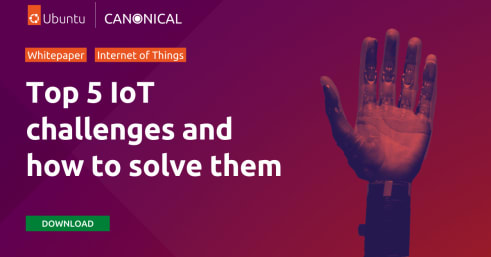Holly Hall
on 18 August 2022
There are a number of challenges to surmount for enterprises in the IoT sector, including having a short time to market, airtight security, a versatile update mechanism for hardware and software and mastering device management. The more planning and practical steps that are taken to address key considerations, the faster an IoT project can get to market and make an impact on the world.
Challenges in IoT
Defining the path to market depends on many factors, including the company’s maturity, available capital and the product’s readiness and positioning. With a variety of options on the market, businesses need to evaluate hardware and software choices pragmatically to suit their needs. Despite the advancement of IoT solutions, it can often be difficult to find a versatile and cost-effective product that satisfies all requirements. In this article, we will discuss the 5 main challenges in IoT. To explore these challenges in depth and understand solutions, read our guide: Top 5 IoT challenges and how to solve them.

1. Product
A successful IoT project is more than just a technical solution. It needs to consider connectivity, integration in human processes and getting the most value from the available data. When there are so many avenues to explore, it can be challenging to design and develop the right product.
The first step to driving a successful product concept is choosing the right business model, based on market understanding. There are various business models that can be adopted in the IoT market, from networking and gateways, to transforming screens into digital signs and industrial drone surveying. The more research you do to learn about a specific vertical, the more opportunities you can uncover and capitalise on. This will also help to scale and grow your product sustainably.
2. Hardware
For all IoT-related projects, hardware is key. Knowing the specific use case is essential to identifying the most applicable board. There are many embedded solutions available, from off-the-shelf multipurpose devices to application-specific modules and components. The more specialised the board is, the more integration considerations that come with it, along with a higher price tag. On the contrary, although more generic hardware may be easier to source, cheaper and more compatible, it may not address the target use case. Some hardware may need to be certified to ensure compatibility with the desired software. Availability of hardware is also an important consideration in IoT.
Consider the parts that make up an automated production line for packaging bottled water. Such a line would often include:
- robotic arms,
- conveyor belts to move bottles,
- packaging machines to add labels,
- a dispenser to fill bottles,
- sensors to measure the environmental conditions in the factory,
- cameras to perform quality control,
- and many more devices.
All components have different requirements, with varying levels of automation and processing power. Choose your hardware carefully to deliver on product requirements.
3. Software
Careful software selection is also important. Selecting software for an IoT project centres around ease of integration and maintenance. It’s essential to update software frequently and monitor security to ensure that devices are protected against vulnerabilities. Typically, IoT businesses need to balance between adopting third-party software and developing an internal, tailored solution to the use case. To explore these choices specifically for Linux, you can read our Embedded Linux: make or buy white paper. The ideal solution depends on your IoT project and could include a combination of both. It’s always important to do sufficient research and evaluate available solutions in the market. Using open-source software offers more flexibility and is usually the most cost-effective solution.

4. Deployment
IoT can be applied in a variety of environments that can be difficult for humans or electronics to endure. These could include maintaining temperatures in industrial freezers, detecting seismic waves in deserts or monitoring machines on a factory floor. Locations like these bring practical challenges, including physical installation difficulties and hardware protection. Gaining value from data is often the key to a successful IoT project. Whether it’s sensor information, device logs, status checking or application updates, data needs a path to flow into and out of hardware. In all deployment scenarios, it’s important to have skilled workers involved. This ensures that installed devices are secure and functional before they are left in the field.
5. Maintenance
Although hardware, software and support options vary for different applications, some underlying issues remain. Long-term usability, maintenance and security are crucial to success and must be considered in depth. For all devices in the field, whether it be to perform software updates, collect data or decommission hardware, physical access will be required for maintenance. Using advanced software can help you create automated processes and complete functions remotely, minimising time spent in the field. This, in turn, optimises hardware maintenance and reduces the associated costs.
Follow these checklists to get started with IoT
Ready to get started on your IoT project? To explore these 5 key challenges further and understand potential solutions for your product, read the white paper: Top 5 IoT challenges and how to solve them. In this guide, there is an interactive checklist at the end of each section. You can fill this out yourself to identify areas to prepare your product, from going to market to maintenance in the field.
If you have questions or are looking for advice for your next IoT project, get in touch! We have recently released Ubuntu Core 22 – learn more about the operating system designed for embedded applications and the dedicated Snap Store for IoT.




